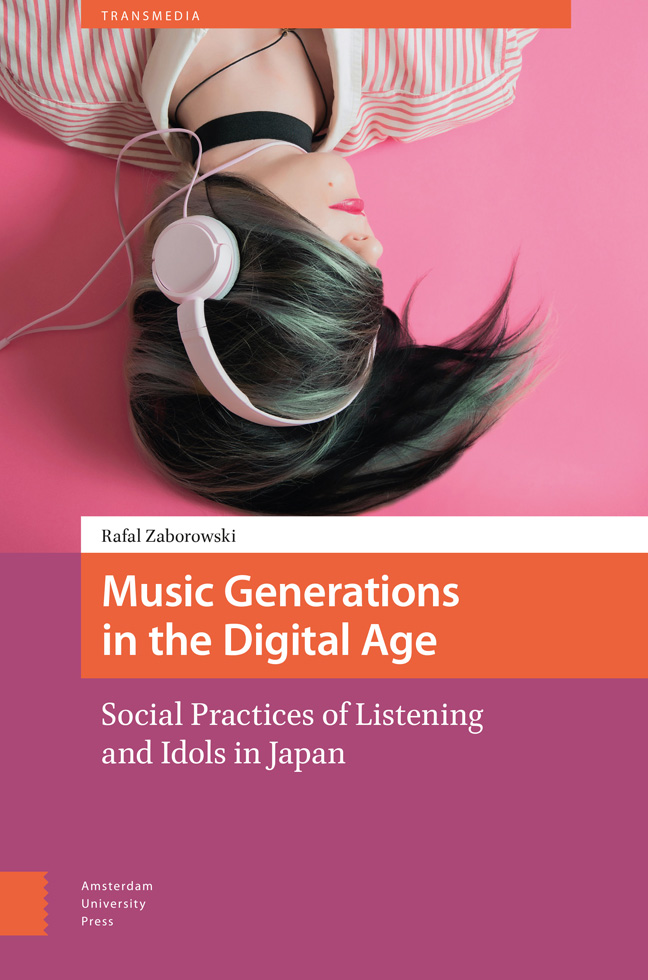4 - Participation and Proximity
Published online by Cambridge University Press: 20 February 2024
Summary
Abstract: This chapter begins with a brief modern history of popular music in Japan to understand the specificities of the Japanese music market and the relevance of pop idols. The overarching frame in the analysis is the distance between audiences and performers and the ways in proximity (good and bad) between popular music acts and their audiences shapes social practices of listening. The chapter argues that such artist-audience intimacy needs to be understood in the context of Japanese music history, its mode of production and circulation in the media mix.
Keywords: Japan, music, idols, proximity, parasocial, J-pop
Popular Music in Japan
To understand the relevance of idol groups for contemporary Japanese audiences, we need to look back briefly at the history of popular music in Japan, and the dialogue between local and global influences of the form and the content. Idol pop and vocaloid music emerge as influential styles for both analysed cohorts in this book, albeit in different ways. They are closely tied in with the spectrum of economic, social and technological transformations that Japan has experienced in the past 40 years.
For scholars of Japan, modern Japanese popular music usually begins with the start of the Meiji restoration in 1868 (Condry, 2011). After centuries of an isolationist stance, Japan was forced to open up to the world, and the changes, shaping and restructuring of the country for years to come, also included music, brought in on foreign vessels in the form of marching bands and military tunes – which was very different to popular shamisen or shakuhachi music of the earlier Edo period. Soldier training centres in Japan started incorporating the marches into the military regimen before 1868 (as early as the late 1850s, after Commodore Perry’s second visit to Japan), creating a style that scale-wise drew from earlier Japanese folk songs, but was undeniably more influenced by the sound of Western drum and fife bands (Mitsui, 2014, p. 3).
Military music bands accompanied Japan in periods of war surrounding the dawn of the 20th century and thereafter, but were only one aspect of the changing soundscape (Oba, 2002). Much of the musical shift was done through the education system, as Western (including, among others, English, American, German, Spanish) melodies became officially used in the Japanese elemental school music curriculum.
- Type
- Chapter
- Information
- Music Generations in the Digital AgeSocial Practices of Listening and Idols in Japan, pp. 135 - 156Publisher: Amsterdam University PressPrint publication year: 2023



